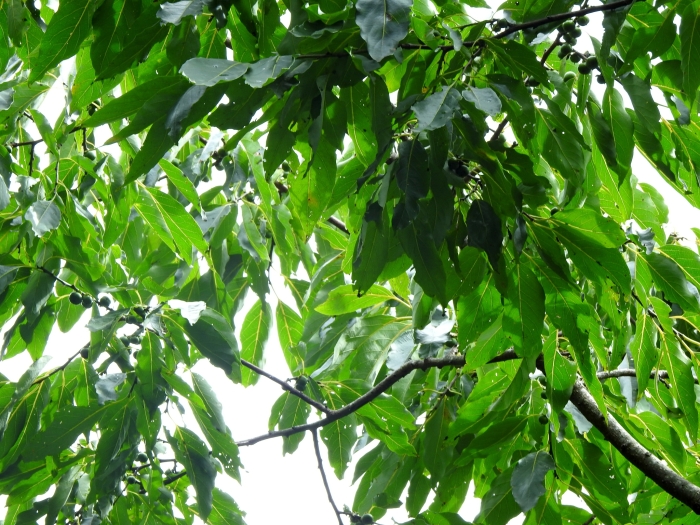Japanese Persimmon
(Diospyros japonica)
Japanese Persimmon (Diospyros japonica)
/
/

Jacy Chen
CC BY 4.0

























Estimated Native Range
Summary
This species is widely cultivated for its sweet, astringent fruit which is enjoyed fresh, dried, or cooked. It is also planted as an ornamental tree in gardens and urban landscapes for its attractive foliage and fruit. Japanese Persimmon prefers full sun to part shade and adapts to a range of soil types, including clay, loam, and sandy soils, provided they are well-drained. It requires medium amounts of water and is relatively drought-tolerant once established. Popular garden cultivars include ’Fuyu’ and ’Hachiya’, which are prized for their fruit quality. Potential problems include pests such as persimmon psyllid and diseases like leaf spot and canker. It is not typically invasive when grown outside its native range but should be monitored to ensure it does not become a problem.CC BY-SA 4.0
Plant Description
- Plant Type: Tree
- Height: 20-30 feet
- Width: 20-30 feet
- Growth Rate: Slow
- Flower Color: White, Cream
- Flowering Season: Summer
- Leaf Retention: Evergreen
Growth Requirements
- Sun: Full Sun, Part Shade
- Water: Medium
- Drainage: Medium, Fast
Common Uses
Bee Garden, Bird Garden, Border Plant, Edible*Disclaimer: Easyscape's listed plant edibility is for informational use. Always verify the safety and proper identification of any plant before consumption., Low Maintenance, Street Planting
Natural Habitat
native to East Asia, specifically China, Taiwan, and Japan, where it thrives in a variety of habitats including forest margins, open woodlands, and hillsides
Other Names
Common Names: Lilac Persimmon, Caucasian Persimmon
Scientific Names: , Diospyros japonica, Diospyros glaucifolia, Diospyros glaucifolia var. brevipes, Diospyros glaucifolia var. pubescens, Diospyros japonica f. pseudolotus, Diospyros kaki subsp. glabra, Diospyros kaki var. glabra, Diospyros kuroiwae, Diospyros kuroiwai
GBIF Accepted Name: